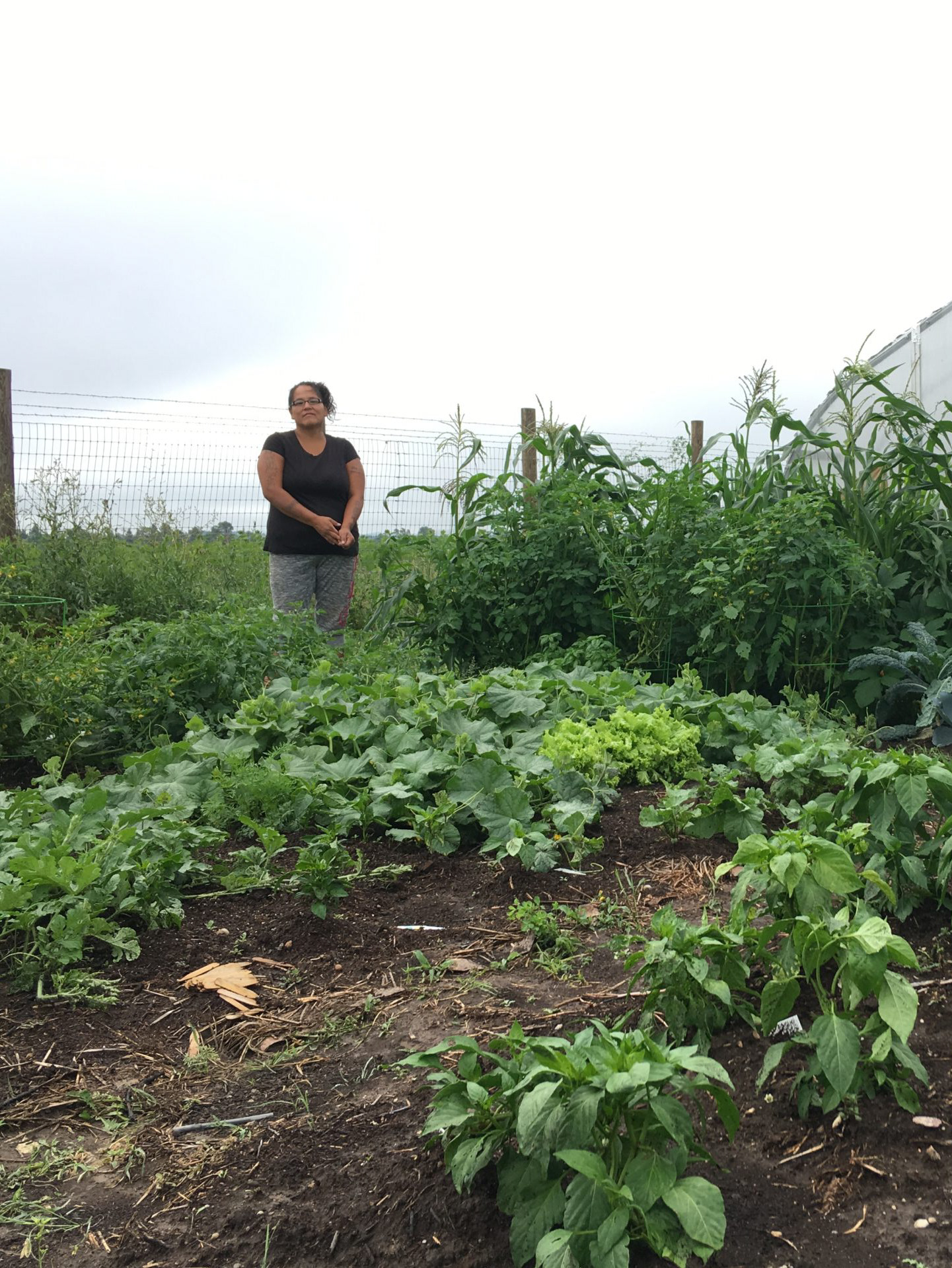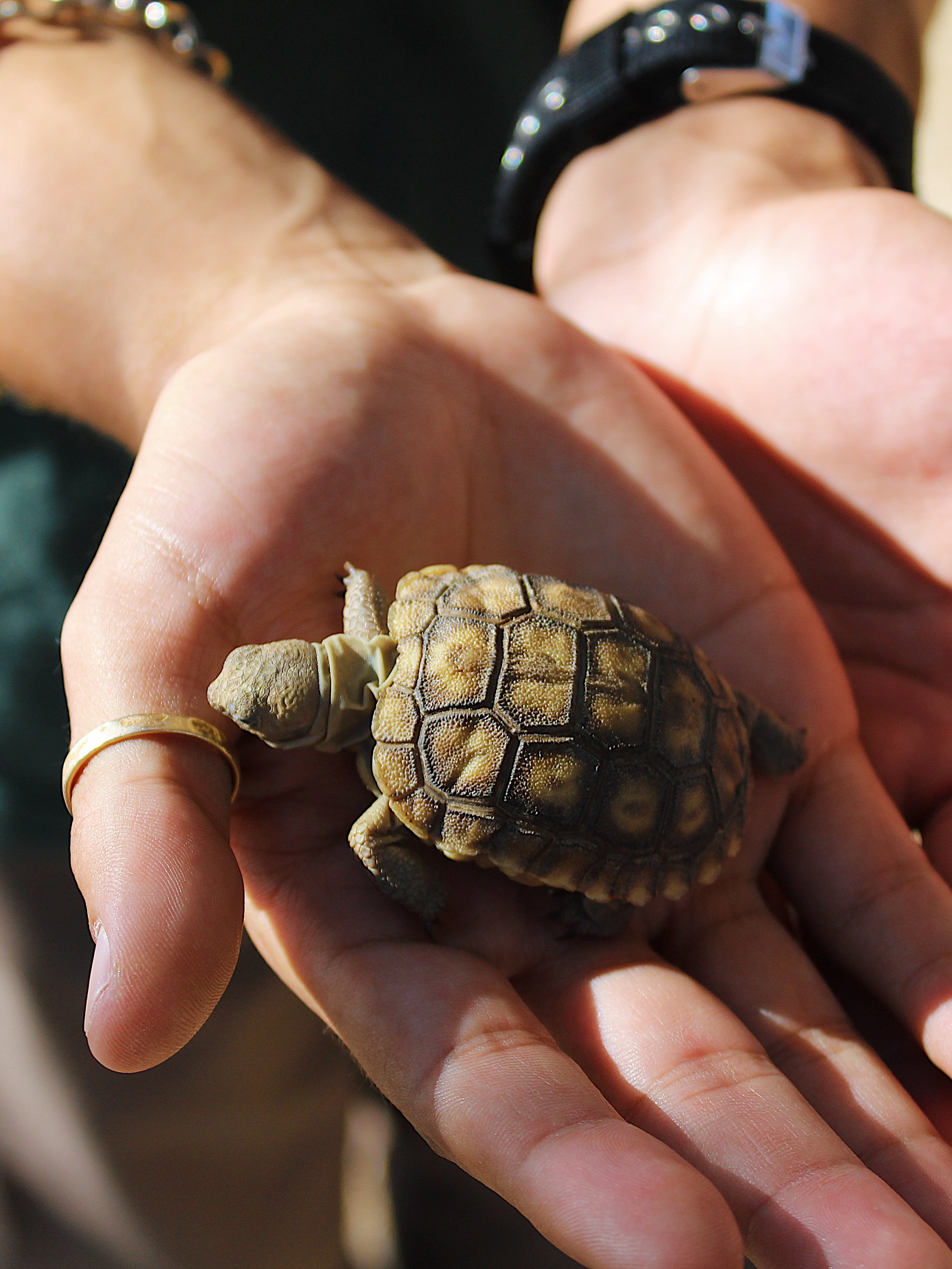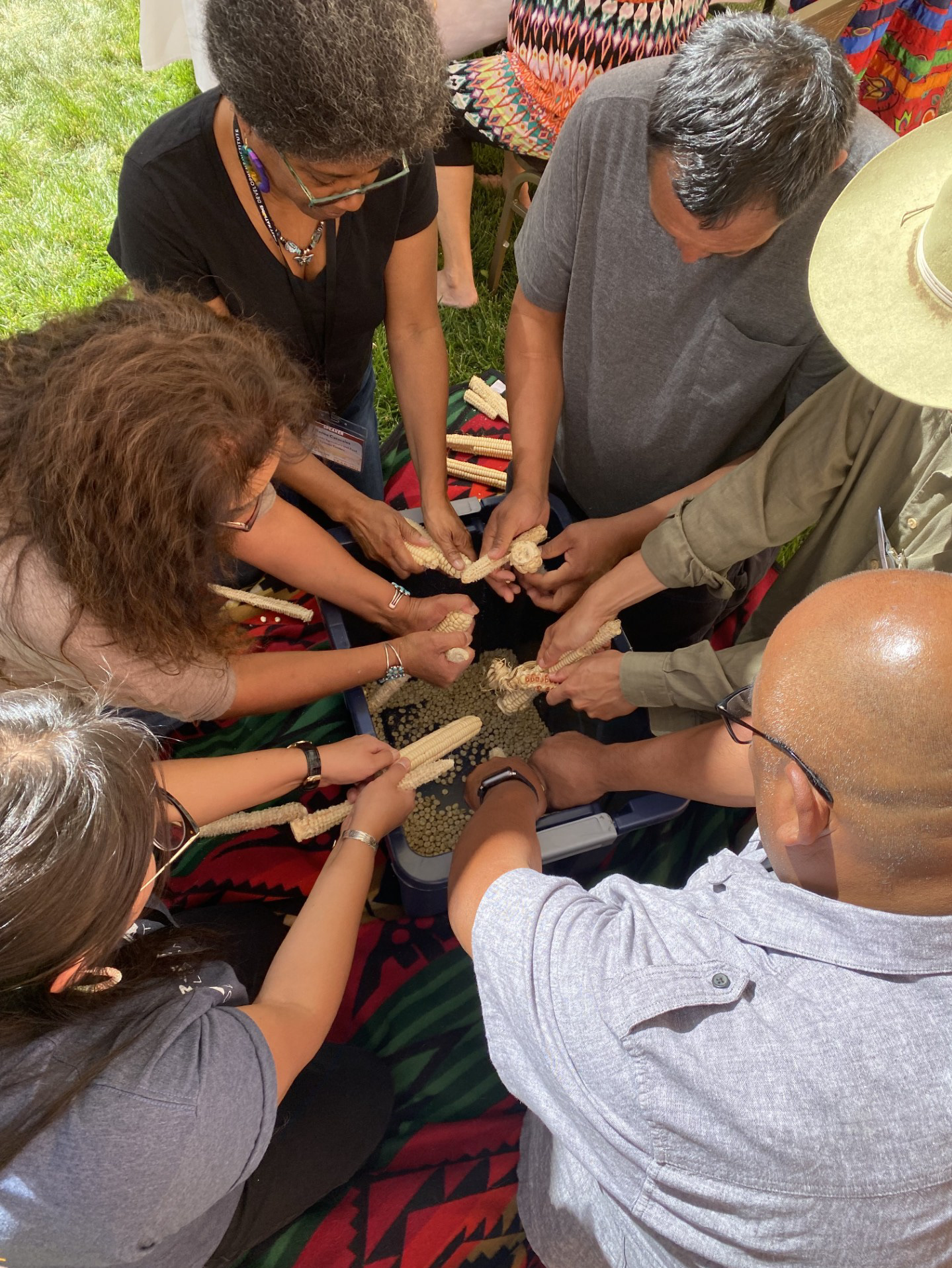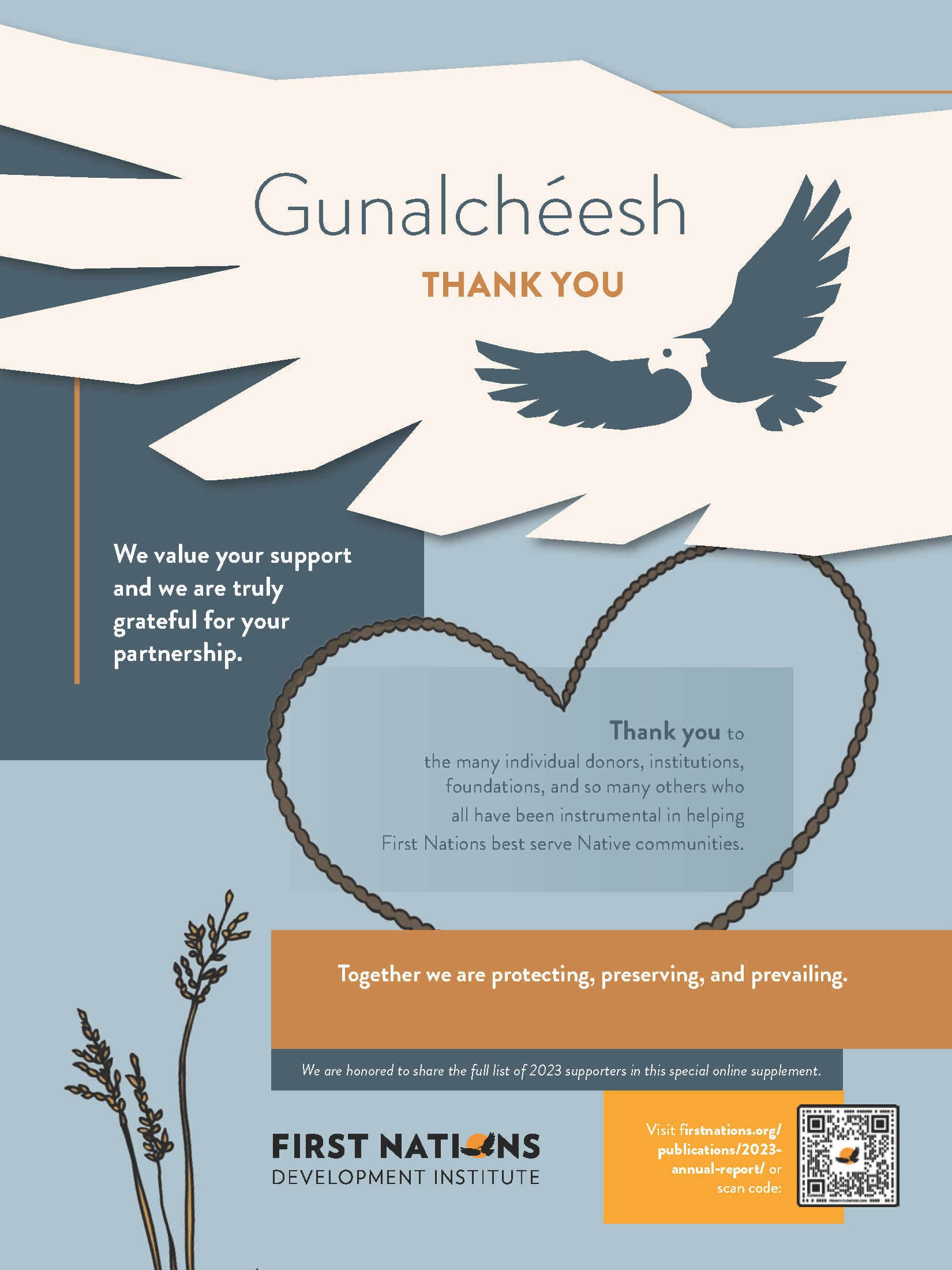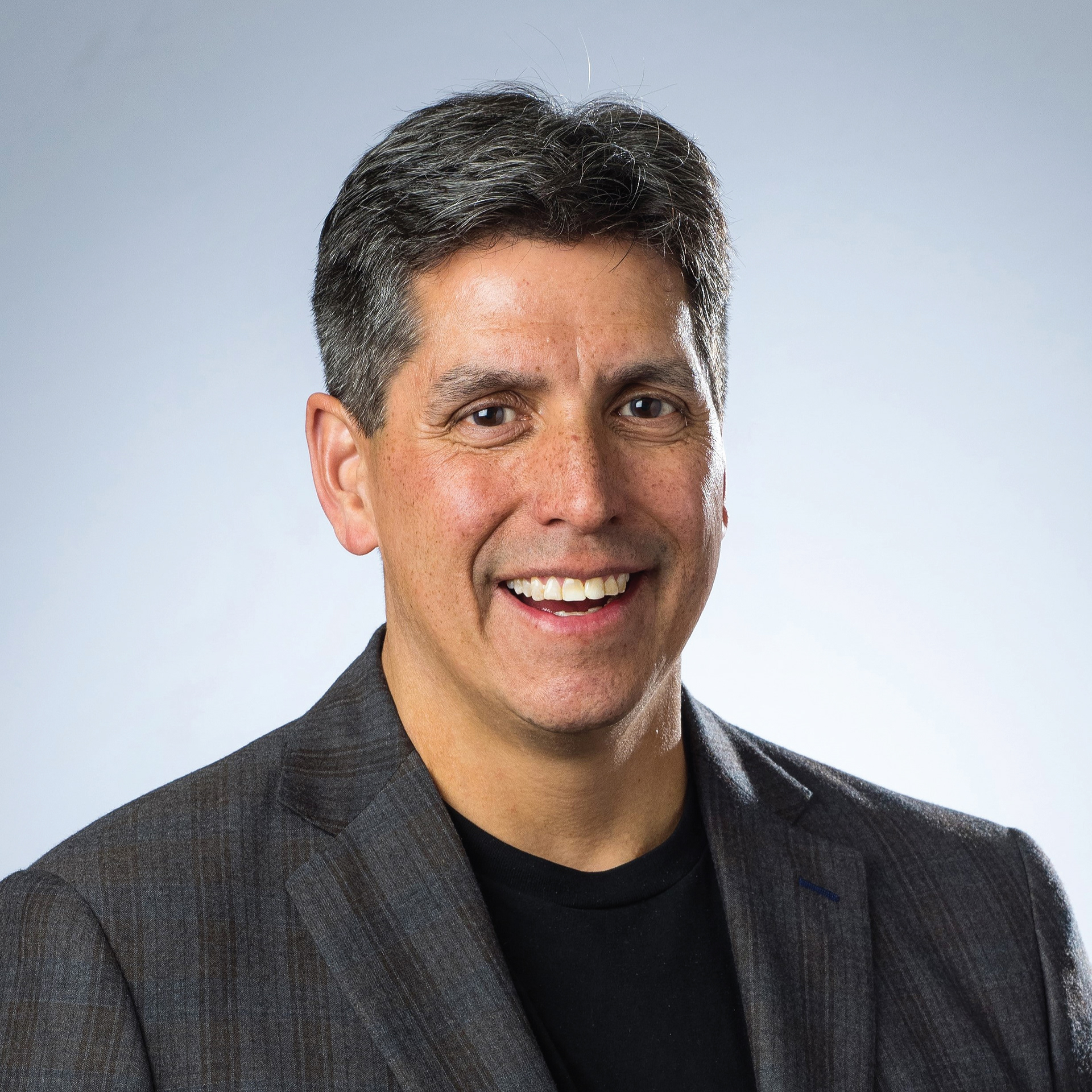

Michael Roberts
Tlingit
Tlingit
As you read this report, you’ll note that First Nations can now add book publisher to our list
of unplanned and unexpected accomplishments. Like the experience we had in producing the
James Beard Award-winning documentary film, GATHER, a couple of years back, in 2023,
First Nations collaborated with The Nonprofit Quarterly to publish "Invisible No More: Voices
from Native America." The book is a collection of 20 essays that seek to challenge narratives
about Native Americans and explore the energy and role of Native leaders and organizations in today’s social movements.
of unplanned and unexpected accomplishments. Like the experience we had in producing the
James Beard Award-winning documentary film, GATHER, a couple of years back, in 2023,
First Nations collaborated with The Nonprofit Quarterly to publish "Invisible No More: Voices
from Native America." The book is a collection of 20 essays that seek to challenge narratives
about Native Americans and explore the energy and role of Native leaders and organizations in today’s social movements.
In producing this book, I was lucky enough, flattered, and a bit stressed to be asked to write
the forward. While I have read a fair number of books in my lifetime, I had never fully thought
about or appreciated these formal book introductions. Further, the act of writing – the
planning and the delivery – often intimidates me.
But then, as I sat down to write the forward – and months later – when I set out to write this
Annual Report letter, I found both tasks came easily. Both tasks hit close to home, and both
allowed me to reflect on my past decades here at First Nations and the many ways we work
in support of Native communities.
Honoring the Lessons I Was Raised On
In the forward, I wrote of how I grew up in a Native neighborhood, a jumbled Native village made up almost entirely of Tlingit, Haida, and Tsimshian households from other Native villages across Alaska, including Hydaburg, Metlakatla, Craig, Kake, and Klawock, where my family was from.
I wrote about our berry-picking and the lessons we gained from it. The memories were not about learning how to pick berries, but about who presented the learnings, and who created the knowledge and pathways. It was the grandmas and aunties who then, and still today, center Native life and culture.
I shared how we would follow the Native women berry-pickers into thickets of berry bushes along the well-worn trails that had been created by hundreds, if not thousands, of berry-pickers, creating and retreading paths that made it easy for me, a novice, to follow. I described how we followed because, as Native people, we all look to our grandmas and aunties – our ancestors and even our contemporaries – to point the way forward.
We honor their keen eye for knowledge and tradition and learning that can only come from experience. In the forward, I shared how the simply-fashioned berry bucket, in my mind, was what "Invisible No More" is all about – recognizing and sharing the deep knowledge held by Native Peoples.
If you have yet to read this book of amazing essays, I encourage you to do so. For me, the book captures much of what we have been practicing and investing in over the past four-plus decades at First Nations. The book is about amplifying Native voices – an attempt to make the invisible more visible and uplift the knowledge of Native Peoples and Native practitioners.
The authors featured in this book represent some of Indian Country’s best thinkers. More importantly, each and every one of them are “boots on the ground” practitioners who have dedicated most of their professional lives to the betterment of Native communities. They have borne witness to and have been instrumental in the creation of incredibly creative solutions for not just Native communities, but also low-resourced communities overall. And, they have accomplished this in an environment in which private philanthropic funders have done their best to ignore, underfund, and – through their inaction – deem Native Peoples not relevant.
Ensuring that the relevance of Native Peoples is visible and celebrated has always been our approach at First Nations. We recognize that the best approaches to our land, our climate, and our education, economies, and food systems all lie with the ingenuity of Native Peoples. The Native communities we serve are also “boots on the ground,” and our job at First Nations is to help support the work they’re doing every day.
It is true that many of the authors featured in Invisible No More, and those First Nations works with, in general, toil in anonymity and are largely invisible outside of Indian Country. But they all have been and continue to be “in it to win it” for Native communities and making the lives of all Native Peoples better.
This is the reason my writing can come easy. It is based on the lessons of my youth, and our inherent trust that Native knowledge, both new and old, is worth lifting up. The voices of our relatives are worthy of amplification, and can reach beyond the Native communities we serve, bringing wisdom and solutions that can benefit the world as a whole.
These are the voices that we protect and preserve, and these are the voices that will prevail.
Gunalchéesh (Thank You),
Michael E. Roberts | Tlingit
President & CEO
First Nations Development Institute
President & CEO
First Nations Development Institute

